In September a forum was held at the Hong Kong Design Institute (HKDI) for those attracted to the latest thinking on sustainable living such as tertiary students, professionals and business executives, as well as members of the public. The gathering presented three days of forum and master classes.
Attendees were able to hear the fascinating insights of keynote speaker Sophie Thomas from London as well as Professor Ezio Manzini from the Milan Polytechnic, Professor Fumikazu Masuda from Tokyo Zokei University, Patrick Bruce of Oval Partnership and Arthur Huang, founder of MIMIWIZ. The speakers offered those present the chance to learn how going green can save your business money whilst making individuals both stylish and healthy, how to keep abreast of international design trends and market developments in sustainable living and how we can co-create a greener Hong Kong. 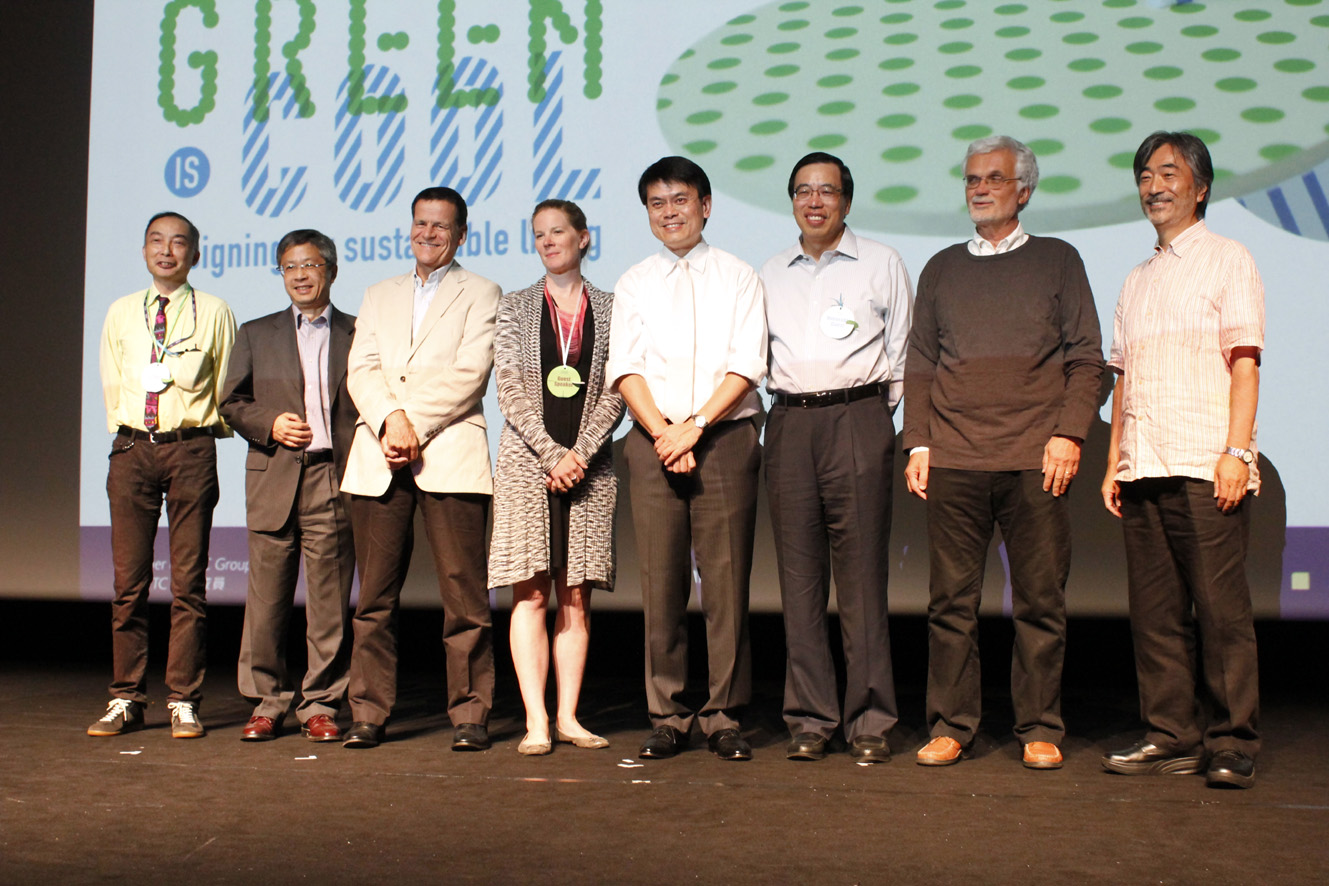
After a welcome speech by HKDI’s Dr Andrew Leung who spoke of the need to identity the consequences of current human consumption patterns on the natural world and of how unsustainable current consumption is, Mr Edward Yau, JP, Secretary for the Environment. Govt HKSAR spoke to the forum on the government’s outlook and current initiatives to bring a greater degree of consciousness and activity to the Hong Kong population.
For example stated Yau, currently Hong Kong has between 40,000 to 50,000 recycling bins in our housing estates but that there is still a “not in my backyard” mentality present locally. Still progress is being made as in 2011 almost 50% of the city’s 600 million tonnes of annual waste is being recycled he stated. He also showed two examples of how the public can be educated to become more accepting of hosting recycling initiatives. The first was the simple painting of the first generation of standard tri-coloured plastic recycling bins, from the garish yellow, brown and green into a more youthful, graffiti oriented look by the children of the estates so as to be less of an eyesore to older generations.
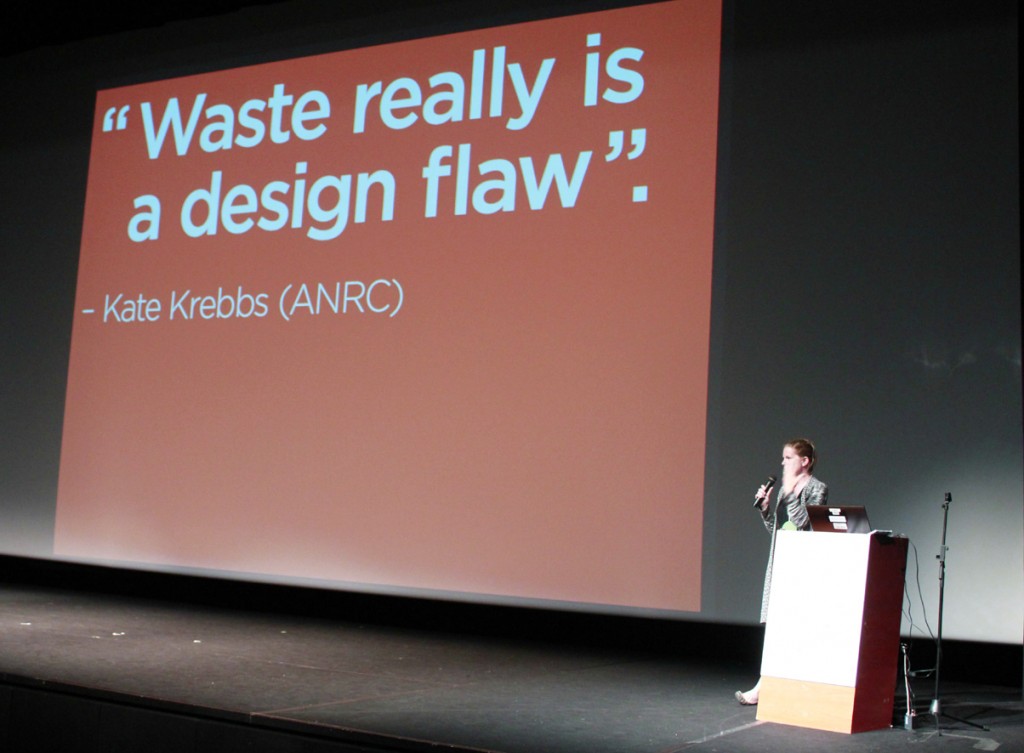 Another example along the same lines, although on a much larger scale was the decorating of massive incinerator plants and sludge treatment facilities to be friendly and welcoming instead of being imposing, giant industrial plants which no-one wants in their community, as well as including educational access for the community within the plants themselves.
Another example along the same lines, although on a much larger scale was the decorating of massive incinerator plants and sludge treatment facilities to be friendly and welcoming instead of being imposing, giant industrial plants which no-one wants in their community, as well as including educational access for the community within the plants themselves.
Mr Yau proudly showed slides of Hong Kong’s own, currently in construction, sludge treatment plant in Tuen Mun which has addressed these issues and has also included a design which covers much of the building in living green roofs blending the facility into the environment.
But he asked the question, “If something has an appealing design but is not green, is it cool?” the answer from the audience being a resounding, “No!”
Next to address the forum was keynote speaker Sophie Thomas of London design practice Thomas Matthews who spoke on the issue of “Elegant Frugality”, how it is stylish to consider what we actually need before deciding to consume. On this theme a fascinating project that Thomas’ practice was involved in back in the late 90s in collaboration with Friends of the Earth as a temporary installation designed as a retail outlet devised to draw media attention to the launch of International No Shop Day in the UK. 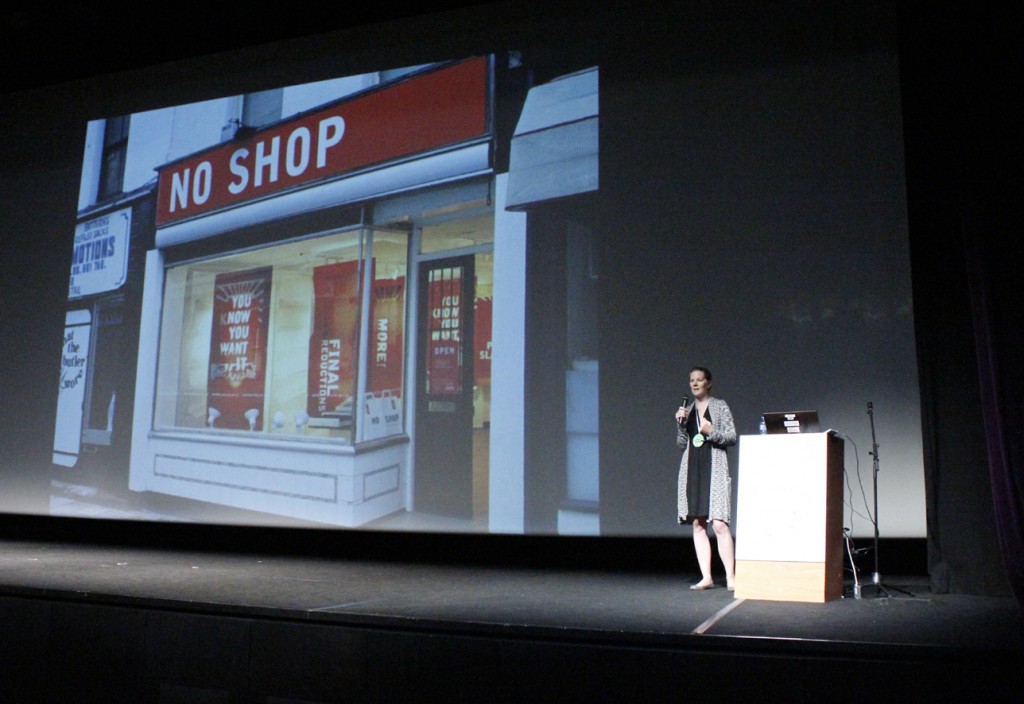 Shop posters were screen printed over recycled sales billboards with the sort of messages we see daily encouraging us to consume. As a way of encouraging consumers to consider why they are making purchases this exhibition must have been an extremely effective way of communicating on the topic, years before being green had become the critical concern it now is.
Shop posters were screen printed over recycled sales billboards with the sort of messages we see daily encouraging us to consume. As a way of encouraging consumers to consider why they are making purchases this exhibition must have been an extremely effective way of communicating on the topic, years before being green had become the critical concern it now is.
As Thomas pointed out, humans are the only species on the planet that create waste. As one of many examples of how designers influence both industry and consumers she stated that in a report by the Design Council that 80% of environmental costs are predetermined by the design process. Elaborating she cited how she had studied one every day product in her life, the humble toothbrush. According to the British Dental Association people should change their toothbrushes every eight weeks, so with a population of 60 million that is potentially over 300 million used annually. But with her own toothbrush she discovered that it is manufactured using four different types of plastic, rendering most modern toothbrushes unable to be recycled. Such statistics will resonate in Hong Kong where landfills in this city of seven million are filling up so quickly that the Government has even proposed expanding landfills into our country parks, although this was quickly rejected by local residents.
Another way of looking at how we consume and an example that further demonstrates that our patterns of consumption are unsustainable was the example Thomas gave on our habits with paper. In 1940’s Britain it was illegal to throw out waste paper, 100% was recycled and reused. With wartime rationing well over, now in Britain junk mail alone creates 550,000 tonnes of waste annually. As she said to the audience who were predominantly students of design at HKDI, “Waste is a design flaw.”
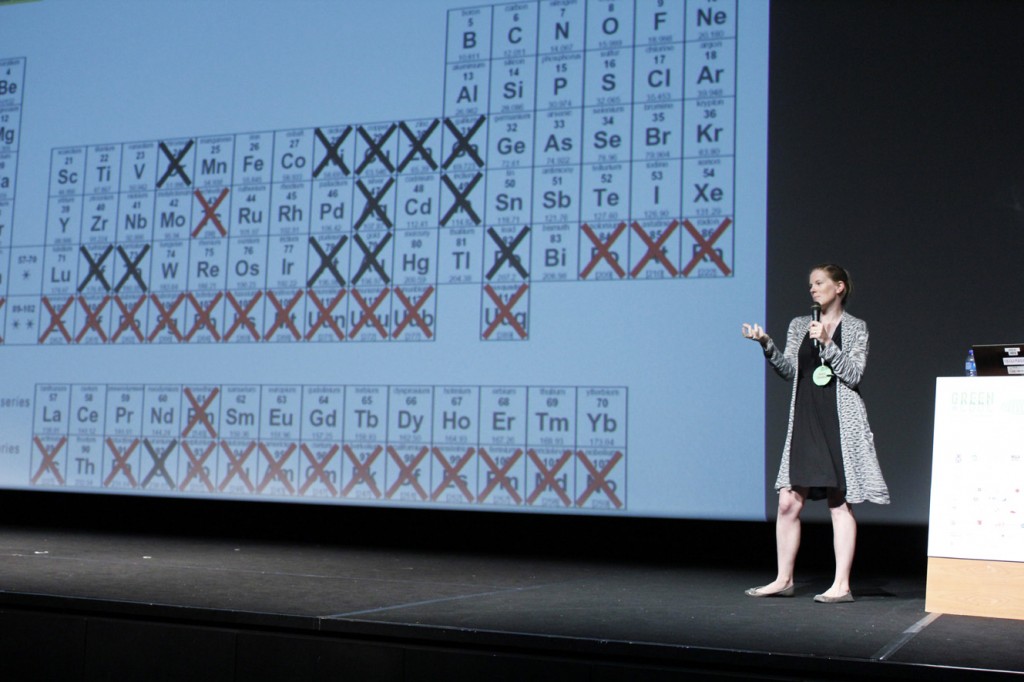 Hong Kong based architect Patrick Bruce, one of the pioneers of the Integer projects in Hong Kong and Kunming, China spoke on the use of bamboo as a building product. One of the demonstration houses in Kunming is built entirely out of bamboo products, other than the regulated use of concrete in the foundations.
Hong Kong based architect Patrick Bruce, one of the pioneers of the Integer projects in Hong Kong and Kunming, China spoke on the use of bamboo as a building product. One of the demonstration houses in Kunming is built entirely out of bamboo products, other than the regulated use of concrete in the foundations.
Apart from being a beautiful home and apart from the fact that bamboo is one of the most sustainable materials in China with many admirable properties, no-one is allowed to occupy the dwelling because the local government has not certified the use of bamboo for use in building projects of this type. Bamboo is uncertified as a building product throughout the entire country, so any potential advantages that the community could benefit from bamboo’s use are being lost. In this instance the designer’s have found a sensible solution for our built environment but it remains for other human mechanism to catch up.
Professor Masuda’s presentation offered a riveting yet sombre moment in the forum. The professor and his architecture students from Tokyo were some of the first people to head into the tsunami ravaged north east in the immediate aftermath of the disaster and remain there helping out in the recovery. First Professor Masuda presented a slide show with some of the most extraordinary photos taken in the disaster zones shortly after the catastrophe. Regardless of what we may have seen in the media, his images were shocking. His second set of photos seemed not vastly different, showing the slow pace of recovery after a disaster on such a massive scale. Did the Professor have a message for the audience? Yes, sustainability he said was not pretending that we can live in a utopian society, but rather acknowledging the precarious world upon which we live and depend and as best we can avoiding the risks we are aware of and above all else, to have resilience.
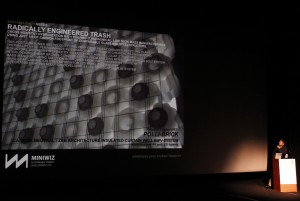 Professor Manzini stated that the most abundant resource we have available is the social resource. He said designers must design for social innovation, that it is important for designers to be a trigger for sustainable change. He said that designers need to help utilise the intelligence which exists in all people to help create conditions for good behaviour, for better patterns of consumption. He said designers need to offer a platform for actions and not just offer products. He said a great starting point for us all on this journey is to learn from what already exists, the knowledge, imagination and capabilities already available as we embark on the creating newly sustainable societies.
Professor Manzini stated that the most abundant resource we have available is the social resource. He said designers must design for social innovation, that it is important for designers to be a trigger for sustainable change. He said that designers need to help utilise the intelligence which exists in all people to help create conditions for good behaviour, for better patterns of consumption. He said designers need to offer a platform for actions and not just offer products. He said a great starting point for us all on this journey is to learn from what already exists, the knowledge, imagination and capabilities already available as we embark on the creating newly sustainable societies.
To learn more about Thomas Matthews Communication Design log onto http://thomasmatthews.com
For more information on the Hong Kong Design Institute log onto www.hkdi.edu.hk














